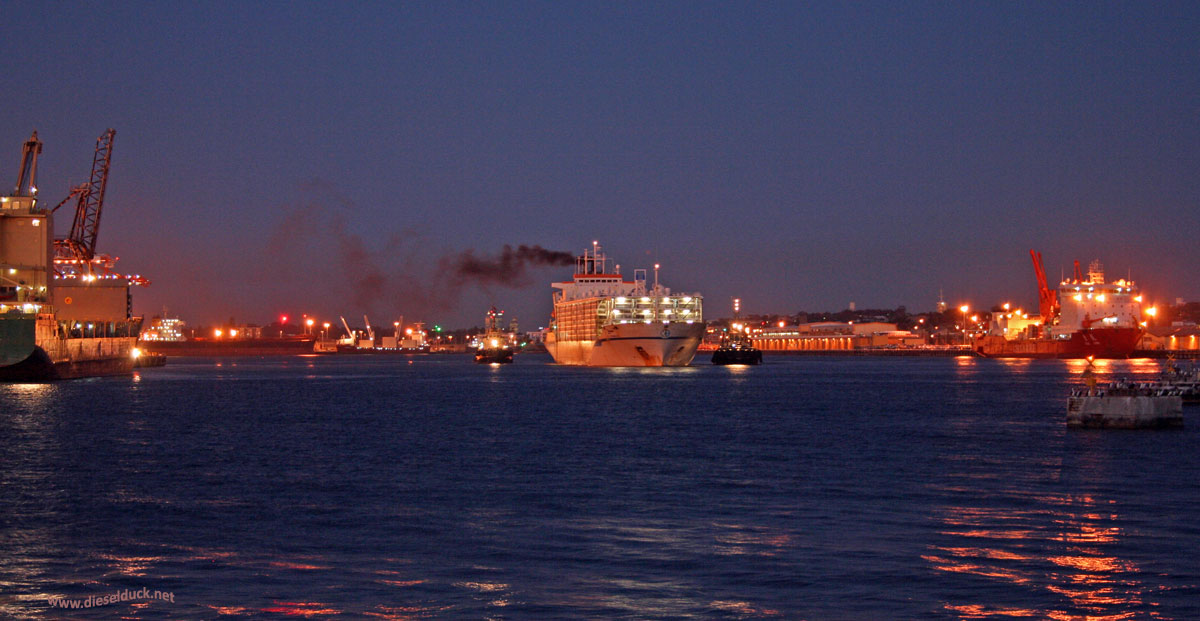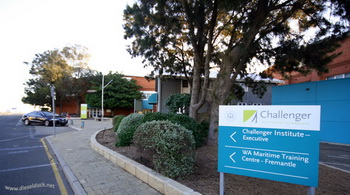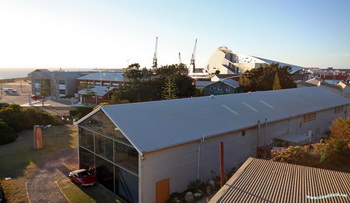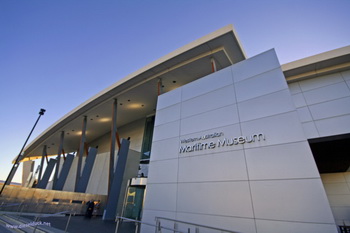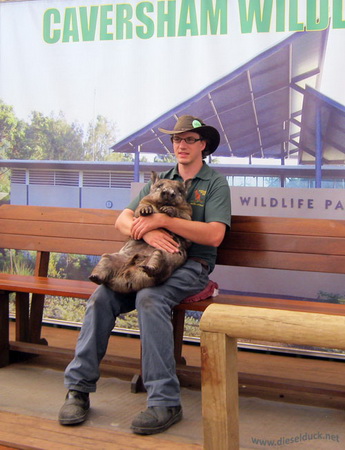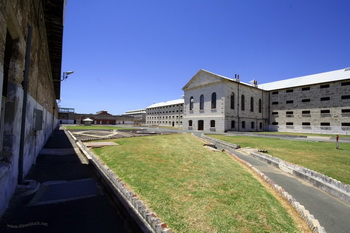Go west young man !
...or east, south, just about anywhere else.
Authored / Pictures by Martin Leduc
August 15, 2013
This article describes attempts to immigrate our family (spouse and three
young boys) to Australia, from Canada, and the challenges we faced. We had
social motives and unique opportunity to explore this sizable undertaking, but
ultimately, the goal was a professional one. The driving factor for this project
is that in Canada, the Marine Engineering certification process is expensive,
burdensome, and unpredictable. Australia's Marine Engineering certification
system is respected, straight forward, predictable and cost effective.
Achieving a higher Marine Engineering certificate, we summarized, would provide
income security and expanded range of opportunities, over a wider set of
circumstance, further into our future.
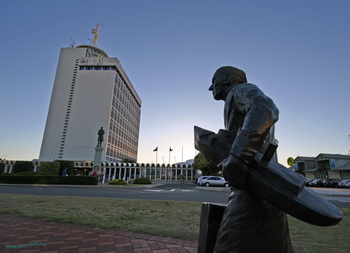 |
| Man, a boat, and a dream. A statue celebrating Australia's immigrants at the Port of Fremantle, whose headquarters are in the background |
I started toying with the idea of moving to another country, for the sole purpose of adopting their Marine Engineering certification system, very early on in my career. It became a strong motivation in the early 2000s, when I was working internationally, on large technically complex passenger ships. The Engineering Officers I was working alongside from many other nations, were "young" like me, but held much higher certificates of competency. I did not observe super human feats, or display of professional brilliance, so I began to wonder how the Canadian certification system seemed to hold us back. Over the years, I could only identify two other national systems that were practically similar and as burdensome as the Canadian model, those of Venezuela and Chile.
Other nations, like Norway, or the Netherlands (to name just two), seem to have a far less onerous certification system. Norway or the Netherlands are certainly not laggards in the maritime field, both nations, and their seafaring professionals, are at the cutting edge of marine technology and processes. The question I then had, is, why can't Canada be the same?
It's a question that I have been exploring for some time, even offered some solutions (see Blue Riband), and frankly as a professional, it has caused me quite a bit of sadness at the thoughts of our missed opportunities, here in Canada.
However, all this professional curiosity and development became a lesser
priority in the mid-2000s, overtaken by the responsibilities of starting out our
small family in Canada. After 8 years of the "baby stage" of our family, we were
able to refocus on our future "life plans", and how we might achieve them. With
a great deal of time and resources invested in my career as a Marine Engineer,
we decide that we would try several avenues to develop professionally, the most
logical avenue in providing us with some security for our future.
 |
| The iconic Kangaroo, at the Caversham Wildlife Park |
One option that we decided to pursue, was the idea of moving abroad to adopt another nation's Marine Engineering certification system. Being passionately involved in the marine industry, Norway, with its leading edge maritime attitudes, was my first choice. Unfortunately, the cost of the endeavor, the language barriers seem to be a non-starter for a family unit.
We began to look at Australia, socially it is very similar to Canada, relatively close, the financial system and cost of living are on par; language should not be a problem either. The fact that the Australian Maritime Safety Authority (AMSA), a relatively young organization, and is at the forefront of modern marine regulations was very attractive to me. I value being a Marine Engineering professional and I found that Australia was not a CoC "paper mill". They have a modern, reasonable, and relevant regulatory regime, on par with any leading regulator around the world.
Sizing up the regime
Getting to know what a nation's regulatory system is quite challenging, lucky for us; AMSA makes most of the information available online. On paper, things seems to be so straight forward it was almost ridiculous simple compared to Transport Canada's system. However, I discovered that the Australian authorities have some landmines as well. I caution anyone following this path to use diligence in reading their regulations, and also reading into what's not there. The AMSA Marine Orders are similar to the Transport Canada's Regulations and Canada's are very thorough - anally thorough actually.
While reading AMSA's orders I could identify some "black holes" which I knew could not be ignore, and it took more digging to establish the requirements. After many weeks of studying the orders, prodding willful sources, a credible path began to emerge on the professional level.
Our plan took this shape:
- Get Australian Certification of Recognition for Watchkeeping Engineer (equivalent to 4th / 3rd Class in Canada) � This allows me to earn a meaningful living, fulfills part of the immigration requirements. Budget - about $7k, 6 months
- Achieve Australian resident status � this allows you to hold above CoR, gain work, and most importantly, attend Maritime School. Cost about $5-8k, 12 months.
- Move, and establish family in Perth area. Cost about $30k, plus home ~$400k, 3 months.
- Get work as engineer on an Australian ship � need the income to maintain family unit, and sea time for future development. Income about $160k/yr
- Attend maritime school in Fremantle, satisfy AMSA. Basically, redo Engineering Cadet theoretical training. Cost about $10k (most probably paid by employer), 10 months.
- Pass AMSA oral exam, obtain Second Class; more sea-time, 1 oral exam, and obtain First Class. Cost >$1k. 36 months.
- Stay in Australia, obtain Citizenship; or return to Canada, obtain Canadian CoR on Australian 1st Class, or move wherever else, after 5-7 years.
Ambitious plan, it certainly is; we calculated it to cost about $50k. It
seems like a lot of money, but in our estimations this was actually more cost
effective than upgrading my CoC in Canada, which we estimate at costing $150k.
The main selling feature of this plan, is a far better likelihood of success in
achieving the Class 2 and Class 1, than in Canada. Canada with its "Part As" and
the unpredictability of examiner�s moods or needs, make this a very risky
investment. This is not the case under the Australian system.
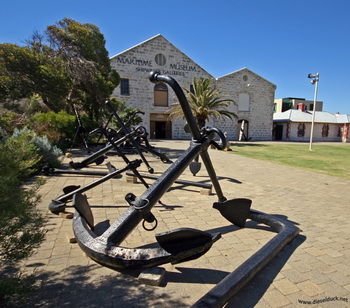 |
| The maritime industry in the area is a large and prominant one, proudly displayed. Here is a second maritime museum located in Fremantle - the fantastic Shipwreck Galleries. |
In April 2012, we decided to raise this project's priority and funding. I began to gather the necessary documents to submit my current Canadian Certificate of Competency (CoC) for assessment by AMSA. This is also an important step, not just for work, but also in the Australian immigration process. I sent in an elaborate binder full of forms and records to AMSA in Canberra. In August 2012, we were advised by AMSA, that my credential were validated, and we would be allowed to proceed to the next step, the actual evaluation.
The whole process is a bit of a dance between AMSA and the immigration people - two separate bureaucracies, where you need to do this first, then you can do that next, so on and so forth. With the initial AMSA assessment steps out of the way, the next priority is to register with the Australian Department of Immigration and Citizenship (DIAC), using their online system called Skill Select. Skill Select is refreshingly helpful for candidates to use, in their immigration aspirations.
Skill Select came into effect in July 2012 and is the Australian immigration department website where aspiring skilled immigrants, like us, can register to express an initial interest (EOI - Expression of Interest) to immigrate into Australia. It cost nothing, and allows Australian employers to see whose out there and interested in coming to Australia, and what their qualifications are. Should an employer take a liking to your profile, then, you are swiftly "off to the races". Otherwise, the process sets the groundwork for the potential immigration application in a common sense approach. It is also a bit of a "gatekeeper" by collating your achievements, and applying the necessary points for the point based visas - which they pretty much all are.
The website also has a great deal of information on the Visa and the immigration process; however it sometimes requires considerable investigation off site, to finding out the real time, applicable information to your case. Choosing which Australian visa to apply for is quite confusing, and my initial choice was the 189 visa, or the 190 visa. These visas would allow us to fully migrate to Australia, without the help of an employer, provide us with residency, which is required to hold an Australian AMSA CoC, go to maritime school, and eventually allow us to be Australian citizens.
In hindsight, the 189 (skilled independent) and 190 (skill nominated) visas were totally foolish ways to go for us. The visas are issued on a point system, and even if you are a very "specialized skill in demand", which Marine Engineers are, the point system is difficult to achieve. Even after meeting the bare minimum of 60 points, rumor is, you truly need 70, you still need to be invited, which is dicey again.
Before you can even apply for any visa, the AMSA assessment needed to be finalized. The only way to do this, is to go in person, pass the AMSA medical, pass the Engineering Watchkeeper exam, and obtain Certificate of Recognition. Easy peases.
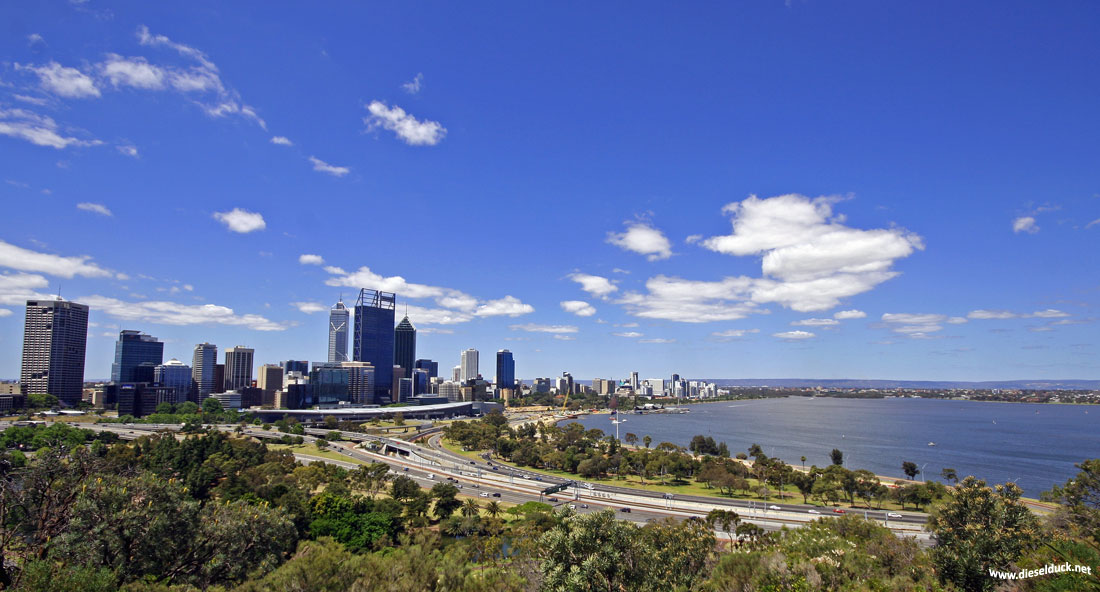 |
| A view of Perth, sitting on the shores of the Swan River in Western Australia, picture taken from King's Park, November 2012 |
Location, Location, Location !
I started identifying
which location in Australia would be the best logistically for us, and Perth, in Western Australia,
was a no brainer. I was excited to the fact that Fremantle, just south of Perth,
had all we needed for this project to succeed. Fremantle is home to one of the
few AMSA offices, with an Engineering Examiner. It is also home to Challenger
Institute, a maritime school offering the courses I needed to upgrade to a Class
1 CoC.
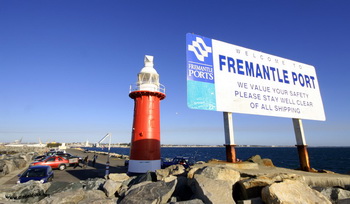 |
| Breakwater at the entrance to the busy Port of Fremantle |
In August / September 2012, we were in full swing, searching for possible work, and looking at homes in the area in the internet. Like in Canada, there is much talk about shortages of skilled seafarer and we saw many ads for Marine Engineers, in local and internationally sources. Having been in this business a long time, I know the HR department is so often disconnected from the real world, so I had my doubt about the "shortage" I was reading about. But the sheer number of operators based in the Perth area, made me optimistic that I could find something in reasonable time.
During our preparatory period, I was also busy researching and in communication with Challenger Institute, the marine school in Fremantle, to fill in those regulatory black holes I previously mentioned. A few surprises were discovered, but in hindsight nothing insurmountable or unexpected. On the education / certificate upgrade, our primary goal, everything seemed to align properly.
"Houston, we are a go"
After coming back from sea in late October 2012, we decided to go ahead with our plan. The research was good, all signs pointed to a reasonable probability of success. We decided to spend the money to finalize the AMSA assessment. This meant that I would go Perth in person, and get this major hurdle over with, so we could move on to the immigration portion of the project. We set a timeline of January to pass the assessment, and then we expected to file immigration application shortly after, with a move in the following fall season. The response rate according to the immigration people was between 4-6 months. We hoped for six months to get a notice, and then we would sell the house in Canada, so on and so forth.
In late October I made contact with the Fremantle based AMSA engineering examiner. Did I mention there are many similarities between Canada and Australia; this fact came into focus quickly. I spoke with this ornery fellow, which took a great deal of my time and energy to extract any information from. I was finally able to establish a date that we could meet. The concept of being about 13,000 km away and it's important to set a predictable schedule, did not seem to sink in.
Problem was, he was the only engineering examiner and that he was in one fashion or another, away from the AMSA office until February 2013, a considerable time off our schedule. After much discussion he mentioned that he could be available the week after next, in early November 2012 - and so the rush was on.
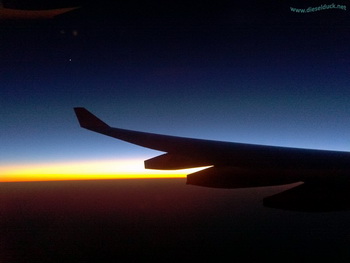 |
| The early morning view of Australia after a long flight from Vancouver, via Hong Kong |
With this appointment somewhat firmed up - the principle goal of the trip - it was now to see how much else we could fit in the schedule, could we even do it? In short order, I manage to set the medical clinic for the extensive seafarer medical. Next priority, visit Challenger, and verify all the facts about the schooling and upgrading plan. Then work: find some.
I attempted to fill my entire weeks with appointments with Human Resources types, meet as many operators as I could - reception was "cool" on this point, but better than in Canada. I wanted to at least survey the docks and yards, get a sense of the work possibilities - or realities. Visit with the local union steward at AIMPE.
Of course, I also had to determine if we could function as a family in Perth. Checking out banks, schools, attending open houses, learning about rental market, and car shopping were all on my "to do list". Travel to Australia is not cheap; so we planned ten days with boots on the ground, three in the air. A very busy two weeks.
With the major appointments solidified, we decided to go for it, and buy the plane ticket, book accommodations, rent a car - the trip would occur early November. I was worried that in the short time frame, I would not be adequately prepared for the engineering examiner, but then again I was already in the profession, and kind of know my stuff.
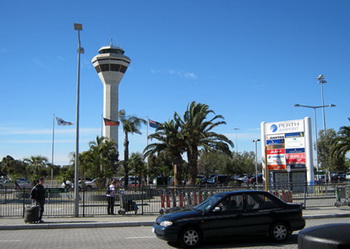 |
| The very small Perth International Airport |
I arrived on a Friday morning, very tired, but excited - the first day of the rest of our lives; picked up the rental car at the airport. Now, we drive a right hand drive vehicle in Canada, on the right side of the road, so the right hand drive on the left side of the road in Australia, really threw me for a loop. I was too early to check in at the B&B, and too wired to sleep anyways, so first stop, the electronics store, where I had seen an ad online for a GPS on sale back in Canada. After being able to find out where I was, life was good - albeit it got very hot quickly.
I expected Perth to be a desert like city, but in fact I was pleasantly surprised at the amount of trees and growth in the area. Coming from BC this was going to be a major thing we would miss, trees! Perth is treed, but very hot and dry too. It did not take me long to find the beach, despite another surprise, the physical size of the city, it�s damn big.
It was Friday, my appointments started Monday, giving ample time to rest and put my best foot forward. I took the opportunity to get familiarized with Fremantle, and the locations of my appointments. Found my accommodations, had some tense discussion with owners - the advertisement was not quite the reality, but the location was golden. Over the weekend, I did the touristy thing, went to the excellent Western Australia Maritime Museum, beautiful Kings Park, Caversham Farm, beaches, etc, really, it's a beautiful area of the world.
Down to business
Monday was my medical. Good thing I arrived early, parked in the Fremantle hospital off Fifth Avenue, a logical place to find the medical clinic, unfortunately the clinic was on Fifth Street, about 12 blocks away. Note to self, never can be too prepared. Being deemed medically fit has never been a problem, but it's a long way to come for a hiccup. Had to go to another clinic for x-rays, another $400, but met two ladies working there from Canada there, one, the wife of a naval engineer from Newfoundland - who would have thunk it.
With the medical passed and my AMSA formed filled out, I dropped by the Fremantle AMSA office to double check my appointment with the engineering examiner the next day. The receptionist calmly proceeded to say that he wasn�t in, and that I should come back next week. My heart stopped.
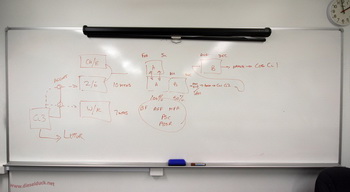 |
| Marine Engineering Instructor, Mr. Powell, of the Challenger TAFE, lays out the path to upgrading a Certificate of Competency in Australia under AMSA; yup, its that simple. |
In the afternoon I went to the Challenger Institute, the marine training school, had a tour of the newish facilities, and had a lengthy discussion with the very helpful engineering department head. I made him repeat the process, numerous times, even drawing it out on the board to make sure I did not find any additional landmines. Nope, that aspect of the project seemed relatively straight forward. A bummer that I would have to redo my courses from BCIT, but hey, I had already done them once, second time should be easier. In less than ten months of schooling, and about $6k I would be able to satisfy AMSA for a second class certificate, and meet most of the requirements for first class. Somebody pinch me; it's not like that in Canada, I thought.
A goal achieved
Tuesday was a big day. I sat in the AMSA office reception area, relatively calm � at first. Next to me, a deck candidate, going through what I was doing - taking a license examination. The room was not that quiet, but I could heart his heart trying to beat out of his chest; he was visibly shaken, traumatized almost. I was caught by surprise, he said this was his third time in the office; I began to get very nervous. The engineering examiner was in training himself, and he, and a more senior examiner from Canberra were there to grill me. Nervous, would be an understatement at this stage.
The Engineer Watchkeeper exam was straight forward. He looked at my resume, and saw lots of medium and high speed engine experience, on all sorts of ships. So he did what all examiners do, focused what I had no experience on, a perceived lack of knowledge on large two strokes plants. But after 45 minutes it became clear to him, that my experience and knowledge was certainly certifiable for Watchkeeping Engineer standards, and declared he was satisfied that I met the criteria. After that, we had a good chat about further CoC�s, and how to get them. He even cleared up some matters, which simplified the overall process. However, he did make a worrisome statement that my extensive sea time would not be applicable to further AMSA certification; obviously this would represent a severe setback to my timeline. I sought further clarification on the matter and as it turns out, this was not supported by a more senior source at AMSA. Pheeeew.
I paid my AU$585, and walked out with a signed "Passed" result form, essentially an Australian Marine Engineer Watchkeeper Certificate of Recognition (pending residency approval from immigration people) and completing the primary goal of the trip. It felt damn good to achieve this milestone; one which I assumed, incorrectly, that would be the most challenging step in settling in Australia.
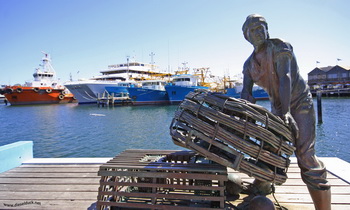 |
| Port of Fremantle, an important fishing port. |
Every professional seafarer, no matter what part of the world you are from, the single biggest challenge and headache to deal with is the "Human Resources" people for a ship operator. Unfortunately, these people are the sole point of contact, and their background is rarely a sailing one. I did not expect Australians to be any different, and they certainly were not.
Like many places in the world, Australian companies talks about shortage of engineers this, and shortage of engineer that. Talk is cheap, because I have found the company's message is either false, inaccurate, lost in translation, or the HR department did not get the "memo". After 15 years actively talking to many of these types, I still have no clue what the hell they are looking for. Although the common theme seems to be "highly experienced, Class 1, willing to work long contracts, for very little money"; ship operators seem to be very short of these people.
However in Australia, this did not seem to be an issue per se, which really threw me for a loop. The money is good in Australia, probably some of the best around. Leave is good as well, day for day, even more on some ships, with month on / month off, some six and six (weeks) rotations. Yet, I experienced the same attitudes as in the rest of the world, for reasons I cannot explain.
 |
| The busy Port of Fremantle, near Perth, WA, November 2012 |
The search for work emerged as the biggest
stumbling block of this project. This despite constant ads in the papers and
online looking for Marine Engineers for its numerous large offshore oil and gas
projects. This was expected to some degree, but as I mentioned earlier, I
figured that the sheer amount of operators in the Perth area, would
counterbalance this challenge.
After a good year of this exercise, I
still have no idea what Australian ship operators are looking for, for their
Marine Engineering needs; however I surmised these factors are most important:
- Australia is not really short of Marine Engineers - despite what the Ship Owners Association, or any other trade publication says, and that's also the opinion of the AIMPE when I discussed it with them.
- "Offshore experience" - for years, I have heard this sh$%&, in various sectors, still have not figured out what this means to an engineer.
- Don't bother looking for work in Australia, unless your feet are legally and firmly planted in Australia, with the right to work there.
- If considering a foreign national, a Caucasian UK resident is preferred - one who speaks the "Queen's English".
- HR people seem to be inundated by applications - They have well-defined departments, slick procedures, but appear to be very short on patience.
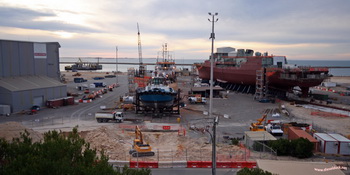 |
| BAE System's shipyard at the massive Australian Maritime Complex; a large cluster of high end maritime equipment and service providers, located south of Fremantle |
Most weeding out of resume is done by computer because you need to apply online, so if the little box cannot be ticked, then you're dead in the water. If you manage to talk to a human, it's usually the HR clerk that's been there, say two weeks, who, although being very friendly, I theorize that their main priority does not involve your professional future.
It was very difficult to get a hold of the more locally established HR firms or biggest offshore operators. Others, were polite and willing to meet, but only because they heard a title, not what it means and how it may fit in their (or their client's needs). Most HR people were friendly enough, but not helpful, and automatically shut down when any immigration talk was concerned.
One thing with Australians, is that they can be, shall we say, blunt, which is somewhat refreshing from other places in the world; at least they tell you something. A "piss off" is easier to understand then silence, or being strung along with false hopes. Blunt the message was, they are not looking for my type of people, a non-Australian Marine Engineer, career minded family man, and this would have worked fine had it not being for the Visa issues. Being a resident would really have opened the doors needed. Unfortunately, it's a chicken or the egg thing.
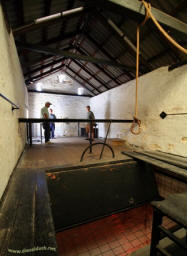 |
| The Gallows at the historic Fremantle Prison. 43 men and 1 woman lost their lives in this chamber. |
The point system for Australian visa is quite something else. Basically, like all nations looking for talent, they want young, single Caucasians, healthy, experienced 30 year olds, trained on someone else's dime. At least, that's the message I got. The main problem for me is my age, I was a few months over forty; being below forty gives you considerably more points. However, with age comes experience, which is good for points, but not that good.
The biggest surprise for us, and in hindsight, the first step we should have cleared, was the English requirements; this is the largest source of potential points. I am not a writer by trade, or an academic, but after running this website for nearly 15 years, I believe I can communicate adequately, and get my message across, albeit in a long winded kind of way (this article, case in point). Which is why we did not pay too much attention to these requirements - at first. This proved to be the biggest mistake, in our path of using the Australian 189, 190 visa stream.
IELTS: not a big fan of the hiccups to start with
In order to get the necessary points to even start the immigration application process, we needed the maximum points from good result on the International English Language Testing, aka the IELTS. Having a Canadian passport proves that you have English Skills rated at 6, on a scale of 9, but no points for the immigration application. But do well on the IELTS and you get 10 points for English Proficient; or score an 8 - Superior - and you get an additional 20 points. With all the other factors on the point scale, we needed to get an 8 on the English test. This became a major upset for me, as I am not an academic and taking test does not come naturally.
Back in Canada, from my trip to Australia I was buoyed by the success of the AMSA certification process, somewhat upset about work outlook, and now deflated by the realization that the English requirements were a big landmine for us. The test is quite the security challenge in itself, not to mention it is costly, and infrequently given. The next one would be a day before I had to get back to sea for work, if I did not take this one it would set us back three months.
So I scrambled for information on the test, studied, practices handwriting two page essays and timing myself. I took the full day test, on a Saturday, in Victoria, the only non-Asian person in the room, apart from the test administrator. I completed the exam feeling pretty good about my efforts, not expecting perfection, but I needed an 8, not the maximum, 9 score.
While sailing at sea, I received the results, and "overall band score" of 7.5. Not bad, considering the test material and my lack of handwriting anything for the last 25 years. I could rewrite and get that 0.5 next time; that is, until I realized that we need a minimum of 8, in the four individual areas of the test, not an average of 8. Given my efforts, and feelings, post-test, this seems highly unlikely.
 |
| Street scene from historic Fremantle downtown core |
Without the points for the test, pursuit of the 189 or 190 Australian visas for Skilled Migration is not an option. This was a considerable blow for us to realize this, after all, we had invested a great of time and money towards what we thought was going to be the biggest challenge, getting the assessment and CoR from AMSA.
Another look over the immigration visa possibilities, identified a few other options, but most are not practical. As an alternative to our original plans, we identified the Employer Nominated Scheme 186 and the Regional Sponsored Migration Scheme 187 visa. For both of these visas, a candidate must be nominated by a company or region (depending on employer needs), in order for the immigration people to consider you.
This is obviously a straight forward proposal, after all, in today's world,
what business wants, business gets. This unfortunately relies on the fact that
an employer needs to be on your side, which, from experience, was / is a
considerable challenge anywhere to begin with, but particularly in Australia
with my current "lowly" certification. The whole reason for pursuing the 189 or
190 visa initially, was to prevent just this, sucking up to unwilling employers
in the first place.
The requirements from a legitimate Australian ship
operator under the nomination program appears to be minimal. They have to
be an Australian operating entity, have assets in Australia, and have the
potential of hiring you for two years. There is some minimal cost involved
(~$330), but
these can be spread over several other applications. There is some labor office
ruling, but most of these have already determined that Marine Engineers are
eligible for this program.
So the trick is to entice an HR manager,
assuming you get past the clerks and "ticked the right boxes", who has faith
that you might be a potential asset to the company. In this day and age, and
from experience, this is an incredibly challenging proposition to make to a ship
operator. Even if an individual is successful with this courtship, it may only
provide you with the opportunity to apply for the visa; the visa process is
entirely different group of bureaucrats to contend with.
If all else
fails, another avenue is to get divorced, find and marry an Australian girl, and
get residency that way.
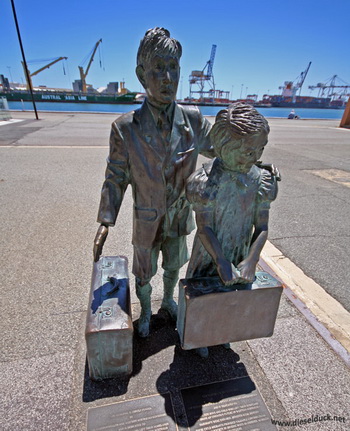 |
| Another statue at the Port of Fremantle, celebrating immigrant's contributions to Australia, this one reflecting on the children. |
There are immigration agents available to guide you through the process of immigrating to Australia. I am typically wary of "middle men", but obviously there is a need for them, as there are many requirements to fulfill. My attitude is that enough resources are provided online by the Australian authorities to tackle the process individually. However the material has to be carefully read and understood, and a seasoned agent should have more experience interpreting rules to an individual, far better than a common person like me does (did). My impression is that the Australian authorities take a dim view of these "middle men" as well.
For our particular case, we did not get to the actual immigration part of the process, so the benefit of using an Immigration Agent, costing about $4,000, was in my view, limited. The particularities of the marine industry and dealing with AMSA, was something I was comfortable with, or at least had little faith that an agent would be better versed in dealing with specialized maritime matters. The costly bit of this process was the mandatory trip down to Australia, to be examined in person, which was the essential part of the pre-immigration process, before any application is made.
In hindsight, the early realization of the importance of the English test, in getting the necessary immigration points, could have save us a bundle of money, by stopping the process right then and there. Not to say that would have been a deal breaker to start with, but it would certainly dampened expectation very early on. Whether paying the agent's fees to realize this, and what that is worth, is an individual's call - either way, it costs a fair bit of money.
We were strongly considering the agent route after the English test, to see what other avenue we might haves missed, but the reality is that an Immigration Agent has very little control over the job market, immigration department, employers, or my age. They would however probably been valuable, should I have been successful in courting an employer for the nomination scheme. With a bona fide employer onboard, I believe that at that point, things are straight forward as far as immigration is concern. For us, we would have paid the money to an agent, just to make sure the process had the best chance of successful outcome, and put our best foot forward with the potential employer.
The moral of the story
The moral of the story, if there are any, is that once again, my eager beaver brain created an innovative solution to a problem and match it with my can do attitude. Unfortunately, my high expectations, and eternal optimistic attitude, came crashing into another bureaucratic wall. In the marine industry, dealing with these setbacks is a required skill, one learns fairly quickly in their careers. Don't get me wrong, it was an overall neat exercise, although a bit expensive and time consuming.
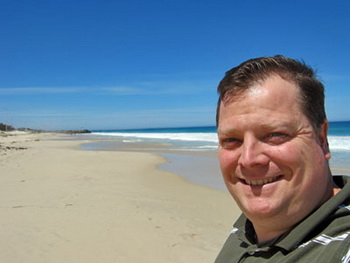 |
| Yours truly, after a very long flight, soaking my feet at Floreat Beach, one of Perth's many spectacular beaches. However it seems they were always strong currents, and very windy. |
One of the most valuable lessons I did learn, is that there is tremendous costs paid by immigrants. "Locals" often talk down immigrants, but what we realized with this project, is that process is an intense one, requiring clear thinking, methodical execution and much soul searching, not to mention a great deal of resources. Immigrating to another nation, even one as similar to Canada as Australia, is a daunting task, particularly for an individual already established in Canada. I certainly have new found respect for immigrants.
Another observation I took from the Perth area is that I saw that the maritime industry can be a bright and modern jewel in a countries aspirations. In Western Australia, ships and sailors are celebrated; a large presence of leading maritime operators and suppliers names can be found in the Perth Area. Perhaps it is the concentration of maritime centric activities, but the whole region seems to be teeming, and proud of its maritime industry, a refreshing sight for a Canadian seafarer like myself.
Oh, and one last thing that my wife and I did like about my trip down under,
although I must say there are alternative, cheaper ways of finding such things,
is that we found a great radio station, reinvigorating our long time love of
music. Tripple J is a great radio station that I was listening to while on my
visit, and I told my wife about it; ever since, its been streaming to our house
everyday. One more thing to take from this adventure.
The end (?)
We set ourselves a deadline for the
project of September 2013, roughly two years after initial steps of preparation
work. With these two years coming to a close, it is time to consider moving on
with alternative plans here in Canada. We were holding off on finding a
different home, buying that new couch and trimming our assets for portability,
etc. A simple life is a good thing in general, but it will be nice to relax a
bit, now that this undertaking is moving to the "back burner".
Not to say we would
not entertain a renewed possibility of immigrating to Australia again, but it is
an expensive process requiring an elevated state of preparedness, so the return
of investment would have to be a factor. Based on this, and many other
experiences in the marine industry, and its HR people, one has to be pragmatic
of the realities of actually getting a call back to start with. All that said, my
feelers are still out there, and if you think I might fit into your
organization�s Australian plans, sailing as an experienced Marine Engineering
professional, call me; we�re in it for the long haul.
![]()





